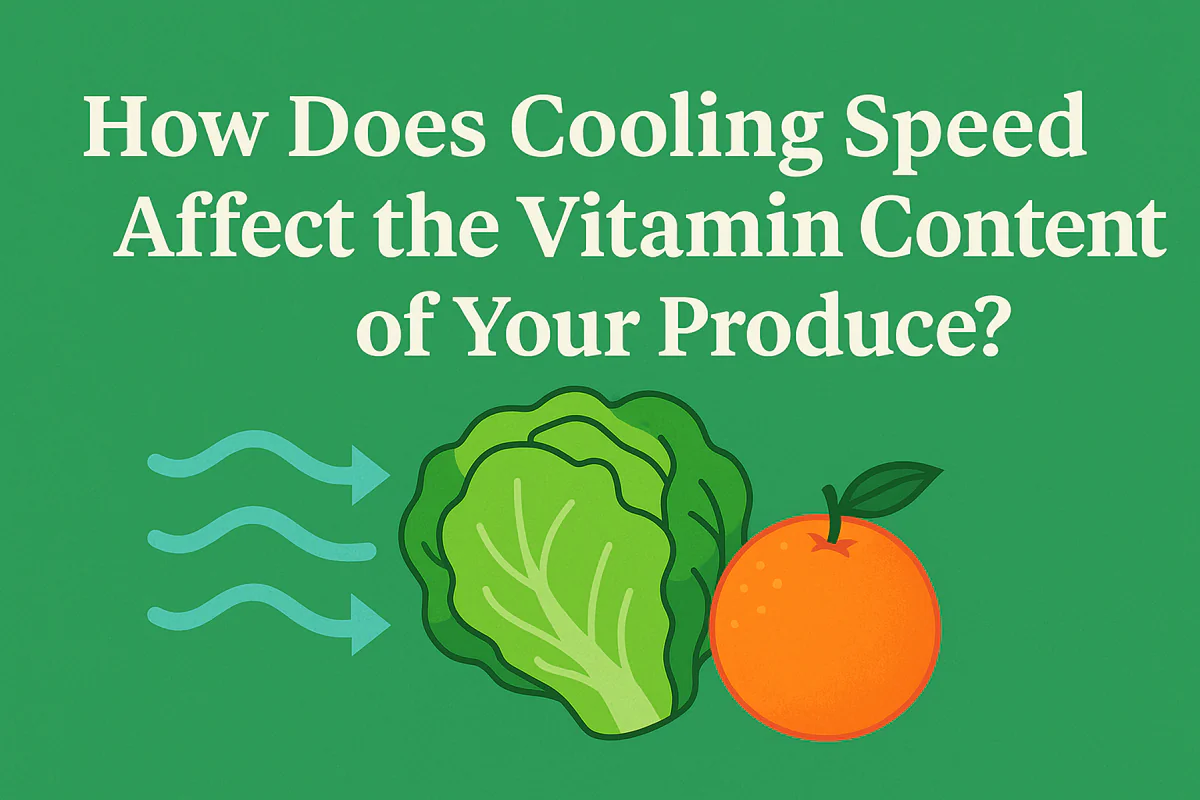
How Does Cooling Speed Affect the Vitamin Content of Your Produce?
You work hard to grow vibrant, nutrient-rich vegetables. But are those valuable vitamins disappearing long before the produce reaches the dinner plate? The clock is ticking from the moment of harvest.
Faster cooling directly leads to higher vitamin retention. Rapid cooling methods, like vacuum cooling, dramatically slow the natural metabolic processes that degrade sensitive vitamins like Vitamin C, effectively locking in peak nutritional value.
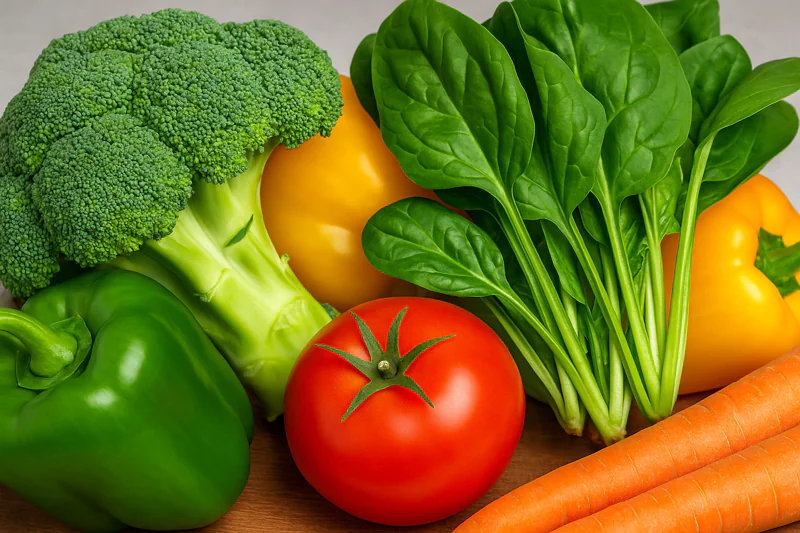
This isn’t just a minor improvement; it’s a fundamental shift in quality preservation. The speed at which you remove field heat is directly proportional to the nutritional value you deliver to your customers. Let’s dive into the science of why speed is everything.
Why Do Vegetables Lose Vitamins After Harvest?
Ever wonder why a fresh-picked vegetable tastes so much better than one from the store? A big part of that is the loss of nutrients, which begins immediately after it’s cut from the plant.
Vegetables are living organisms that continue to "breathe" (respire) after harvest. This process consumes sugars and vitamins to stay alive. Heat acts as an accelerator, making this process happen much faster, causing rapid nutrient loss.
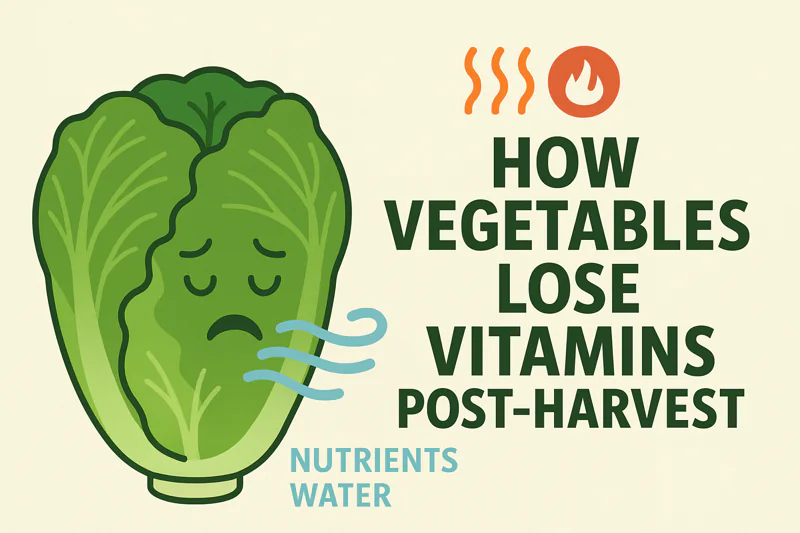
Think of a freshly picked head of broccoli. It’s still alive. To survive, it begins to break down its own stored resources. These resources include sugars, acids, and, most importantly, vitamins. Enzymes within the vegetable, which are highly active in warm conditions, work to carry out this process. The heat from the sun and warm air—the "field heat" we’ve talked about—supercharges these enzymes. So, a pallet of broccoli sitting in a 25°C (77°F) field is rapidly burning through its nutritional reserves. This degradation is invisible to the naked eye at first, but it’s happening every minute. For a quality-focused buyer like Norman, this invisible loss is a major concern, as it directly impacts the real value of the product he’s sourcing.
The Race Against Time
This is why I always tell my clients that post-harvest handling1 is a race against time. A traditional cold room can take 12-24 hours to cool the core of a pallet. During those long hours, the destructive enzymatic processes continue at a high rate. A vacuum cooler2, by removing that field heat in just 25 minutes, essentially hits the "pause" button on this degradation. It brings the product to a near-dormant state so quickly that the vitamins simply don’t have time to break down. You are preserving the vegetable in a state almost identical to the moment it was picked.
| Cooling Speed | Internal Process | Impact on Vitamins |
|---|---|---|
| Slow Cooling | High respiration and enzyme activity for many hours. | Significant loss, especially of sensitive vitamins. |
| Fast Cooling | Respiration and enzyme activity halted almost instantly. | Maximum vitamin retention3; nutrients are locked in. |
Which Vitamins Are Most Sensitive to Slow Cooling?
Are all vitamins affected equally by heat and delays? No. Some are quite stable, but others are incredibly delicate and will disappear quickly if produce is not cooled properly.
Water-soluble vitamins, especially Vitamin C (ascorbic acid) and some B vitamins like folate, are extremely sensitive to heat and oxidation. They are often the first nutrients to be lost due to slow cooling.
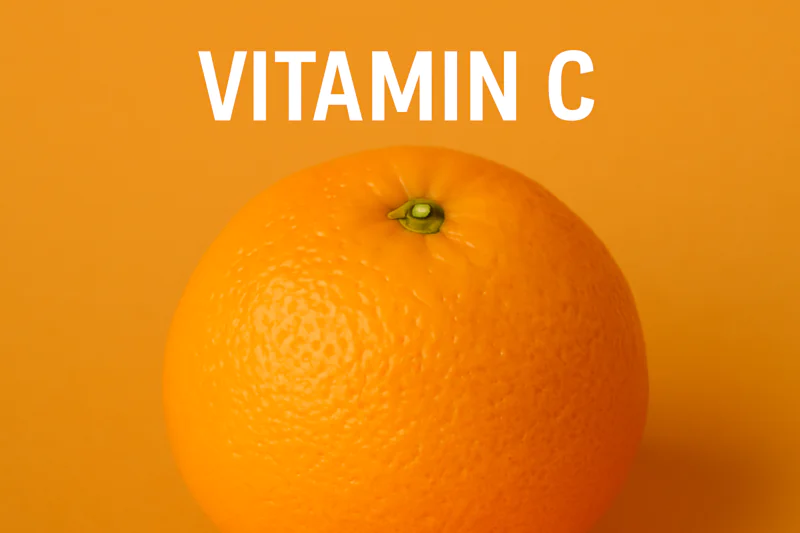
Vitamin C is the poster child for nutrient loss. It is essential for human health, but it’s also very unstable. The same enzymes that cause browning and decay in produce are also masters at destroying Vitamin C. When the vegetable is warm, these enzymes are highly active. They use oxygen from the air to break down the vitamin. This is why a study on spinach found that it can lose up to 50% of its Vitamin C within 48 hours if kept at room temperature. Folate (Vitamin B9), another crucial nutrient found in leafy greens, is similarly fragile. For a central kitchen manager like Sophia, who may be serving thousands of people and needs to meet nutritional guidelines, this loss is critical. Delivering lettuce with half its potential Vitamin C is delivering an inferior product.
Protecting the Most Vulnerable
The speed of vacuum cooling4 is particularly beneficial for these sensitive vitamins. Because the process happens in a low-oxygen (vacuum) environment, it starves the oxidative enzymes of one of the key ingredients they need to do their damage. So, you get a double benefit: the rapid temperature drop deactivates the enzymes, and the vacuum environment further protects the vitamins from oxidation. This is why produce that has been vacuum cooled not only lasts longer but also retains a significantly higher percentage of its most valuable and delicate nutrients.
| Vitamin Type | Sensitivity to Heat/Oxidation | Reason | Best Preservation Method |
|---|---|---|---|
| Vitamin C5 | Very High | Water-soluble, easily oxidized by enzymes. | Rapid cooling, low oxygen. |
| Folate (B9)6 | High | Also water-soluble and sensitive to heat. | Rapid cooling. |
| Beta-Carotene | Moderate | Fat-soluble, more stable but still degrades. | Proper cold storage. |
How Does Vacuum Cooling "Lock In" Nutrients So Quickly?
We know slow cooling is bad and fast cooling is good. But what is it about the vacuum cooling process specifically that makes it so effective at preserving vitamins compared to a standard cold room?
Vacuum cooling pulls heat from the inside of the vegetable at the same time as the outside. It cools the entire product uniformly to its core in minutes, instantly stopping the internal processes that destroy vitamins.
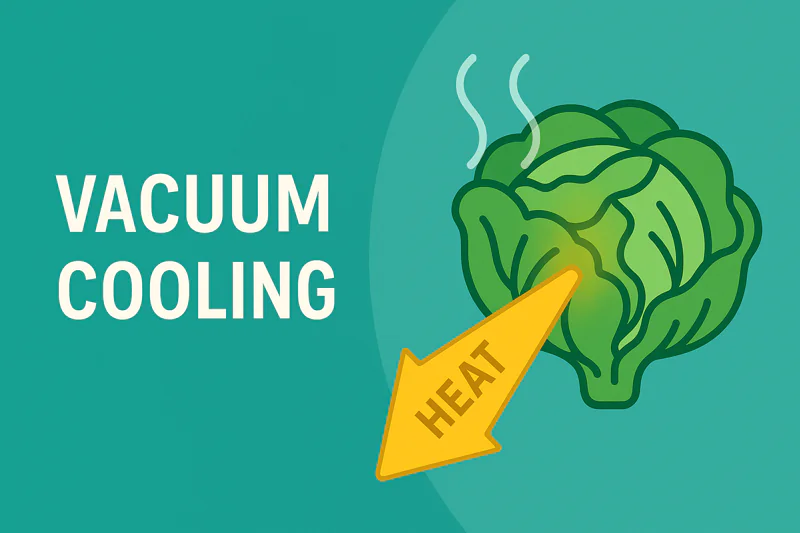
A traditional cold room works by blowing cold air over your produce. It’s a slow process of convection. The cold air cools the outer leaves first, and that coldness gradually penetrates towards the center. While the outside is getting cool, the core of the broccoli floret or lettuce head can remain warm for many hours, continuing to burn through its vitamins. Vacuum cooling is completely different. By lowering the pressure, we encourage moisture to evaporate from the entire surface area of the product—including the inner leaves and crevices. This evaporation pulls heat energy from everywhere at once. It’s a deep, democratic cooling that gets the core temperature down just as fast as the surface temperature.
Stopping the Engine from Within
This ability to stop the "engine" of respiration at the core is the secret. It’s what allows a farmer like Carlos to guarantee that every single part of his harvest maintains its peak nutritional quality7. The destructive enzymes are deactivated throughout the entire product, not just on the surface. Within about 25 minutes, the vegetable is in a state of suspended animation, and its vitamin content is secured. This uniform, rapid cooling is something a cold room simply cannot achieve. It is the technological advantage that allows our clients to deliver a product that is measurably higher in nutritional value.
| Cooling Method | Mechanism | Time to Core Temp | Vitamin Retention Result |
|---|---|---|---|
| Cold Room | Slow air convection (outside-in). | 12-24 hours | Poor; core stays warm for hours. |
| Vacuum Cooling8 | Rapid evaporation (uniform cooling). | ~25 minutes | Excellent; core cools instantly. |
Can Higher Vitamin Content Translate to Higher Profits?
This all sounds great from a scientific perspective, but does preserving more vitamins actually make you more money? In today’s market, the answer is a resounding yes.
Absolutely. A higher nutritional content is a powerful mark of premium quality. It allows you to market your produce as superior, justify a higher price, and build a brand reputation that attracts health-conscious customers.
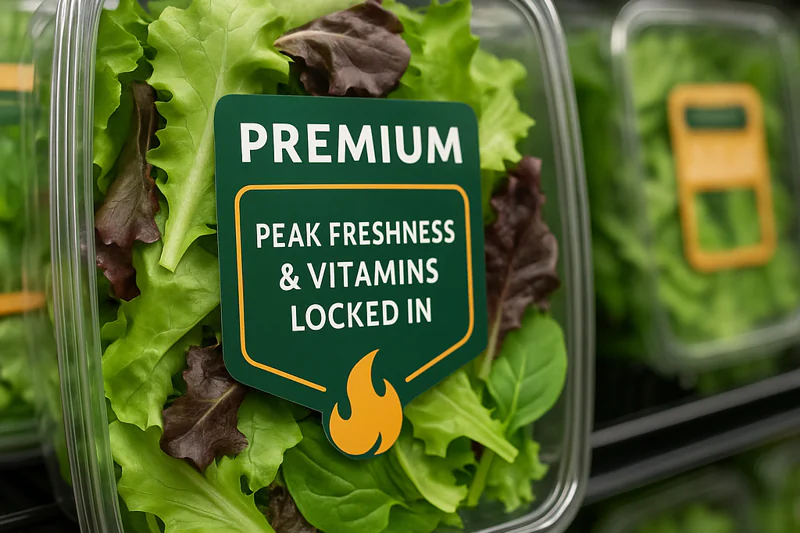
Think about the modern consumer. They are more health-conscious than ever before. They read labels. They are willing to pay more for food they perceive as healthier and more nutritious. When a buyer like Norman sources produce, he knows this. He is looking for suppliers who can give him a competitive edge. If you can provide him with an independent lab report showing your vacuum-cooled lettuce retains 30% more Vitamin C than conventionally cooled lettuce, you have just given him a powerful marketing tool. Your product is no longer just a commodity; it’s a premium health product. This allows everyone in the supply chain to command a better margin.
Building a Brand on Quality
This is how you differentiate yourself. Instead of being one of many farms competing solely on price, you become the farm known for its superior quality and nutritional value. You are selling a story of freshness that you can back up with science. This builds immense trust and brand loyalty. My clients who have embraced this have found that it opens doors to higher-end markets, food service companies, and retailers who cater to discerning customers. Investing in the technology to preserve vitamins is a direct investment in your brand’s value and your long-term profitability.
| Business Model | Approach to Quality | Market Position |
|---|---|---|
| Commodity Focused | Focus on yield and basic shelf life. | Competes on price, vulnerable to market fluctuations. |
| Quality Focused | Invests in tech to preserve nutrients & freshness. | Competes on value, builds a premium brand, commands higher prices. |
Conclusion
The connection is clear and direct: the faster you cool your vegetables, the more vitamins they retain. Vacuum cooling is not just about extending shelf life; it’s a powerful tool for preserving the peak nutritional quality your customers value most.
-
Understanding post-harvest handling can help you grasp its critical role in preserving food quality and nutrition. ↩
-
Exploring how vacuum coolers function can provide insights into their efficiency in maintaining food freshness and nutrient retention. ↩
-
Learning about vitamin retention factors can enhance your knowledge of nutrition and food storage practices. ↩
-
Explore how vacuum cooling enhances vitamin preservation and extends shelf life, ensuring you get the most nutrients from your produce. ↩
-
Learn about Vitamin C’s sensitivity and the best methods to preserve its potency in food, crucial for maintaining health. ↩
-
Discover effective ways to preserve Folate in foods, ensuring you retain this essential nutrient for your diet. ↩
-
Understanding nutritional quality can help you appreciate the importance of proper cooling methods for vegetables. ↩
-
Explore how Vacuum Cooling technology enhances vegetable preservation and nutritional retention, ensuring better quality produce. ↩

Mila
You May Also Like
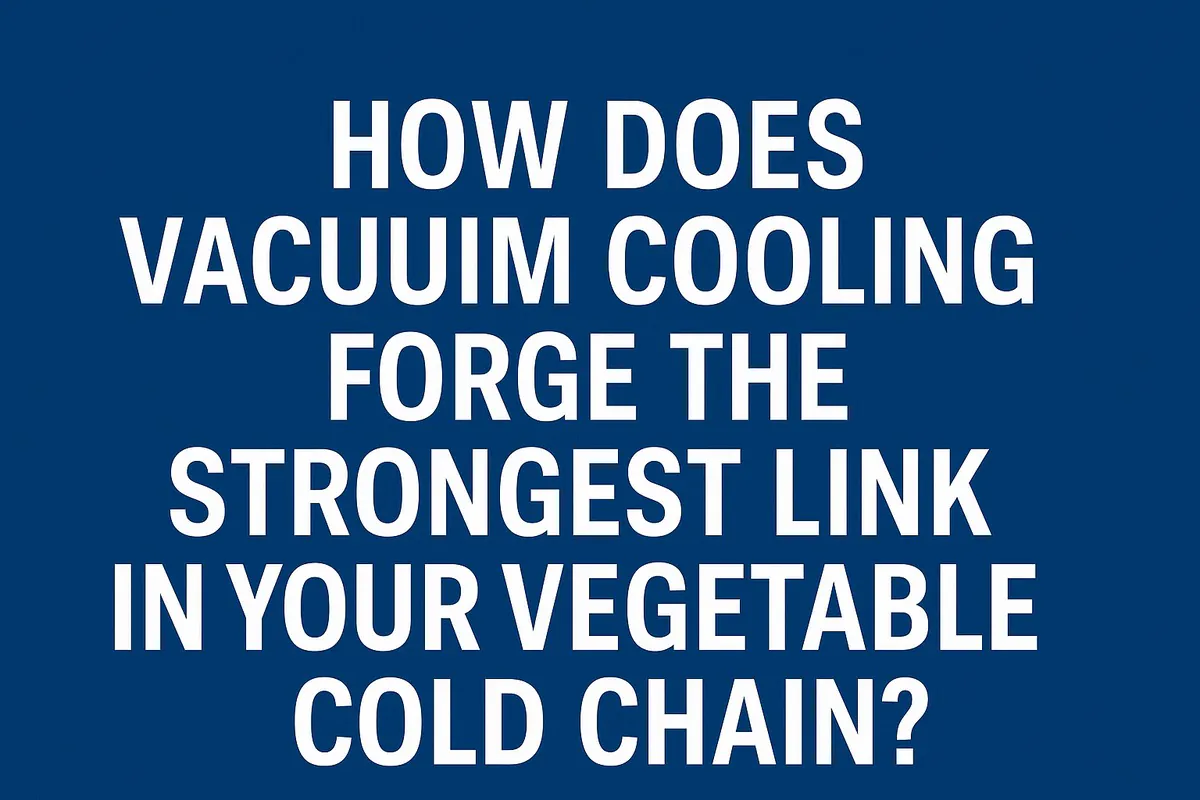
How Does Vacuum Cooling Forge the Strongest Link in Your Vegetable Cold Chain?
You work tirelessly to grow perfect, healthy vegetables. Yet, you know that from the moment of harvest, an invisible clock
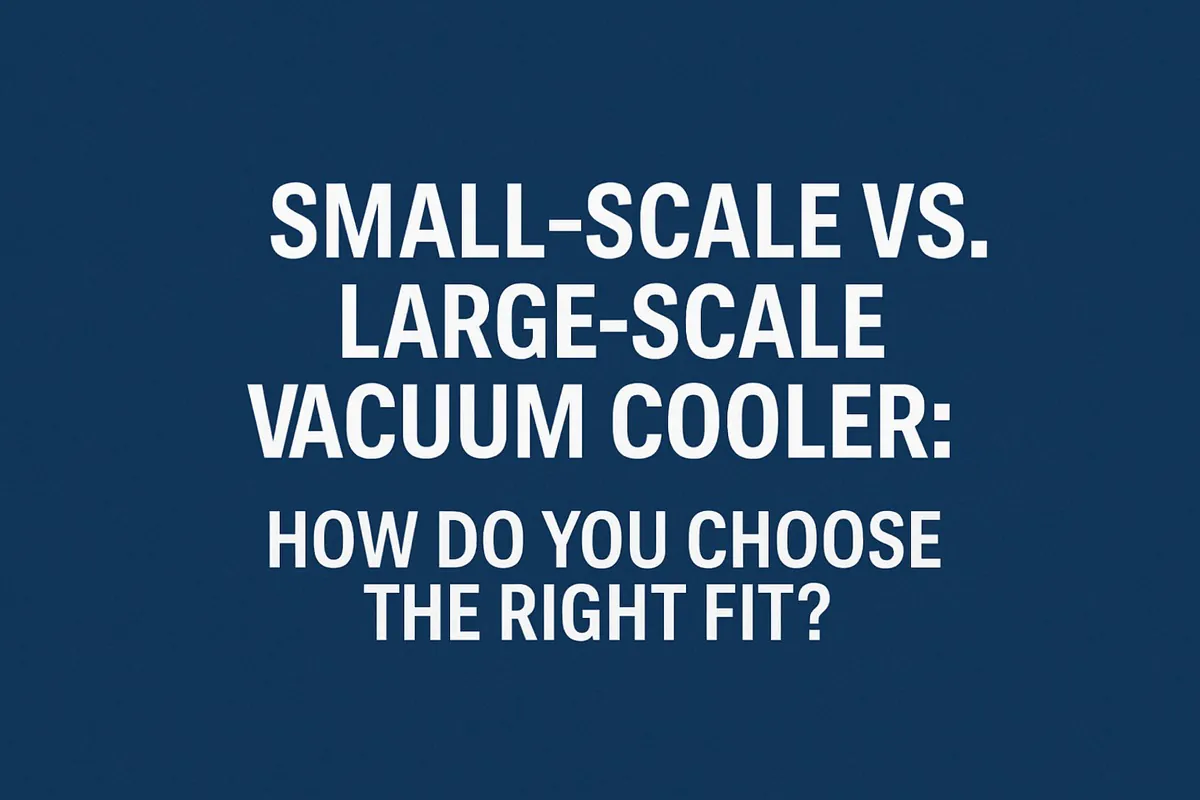
Small-Scale vs. Large-Scale Vacuum Cooler: How Do You Choose the Right Fit?
You’re convinced that vacuum cooling is the key to elevating your product quality, but now you face a critical decision.

How Can You Master Vacuum Cooling for Leafy Greens to Maximize Quality and Profit?
You grow beautiful, vibrant leafy greens, but you know the invisible enemy is time. From the moment of harvest, the
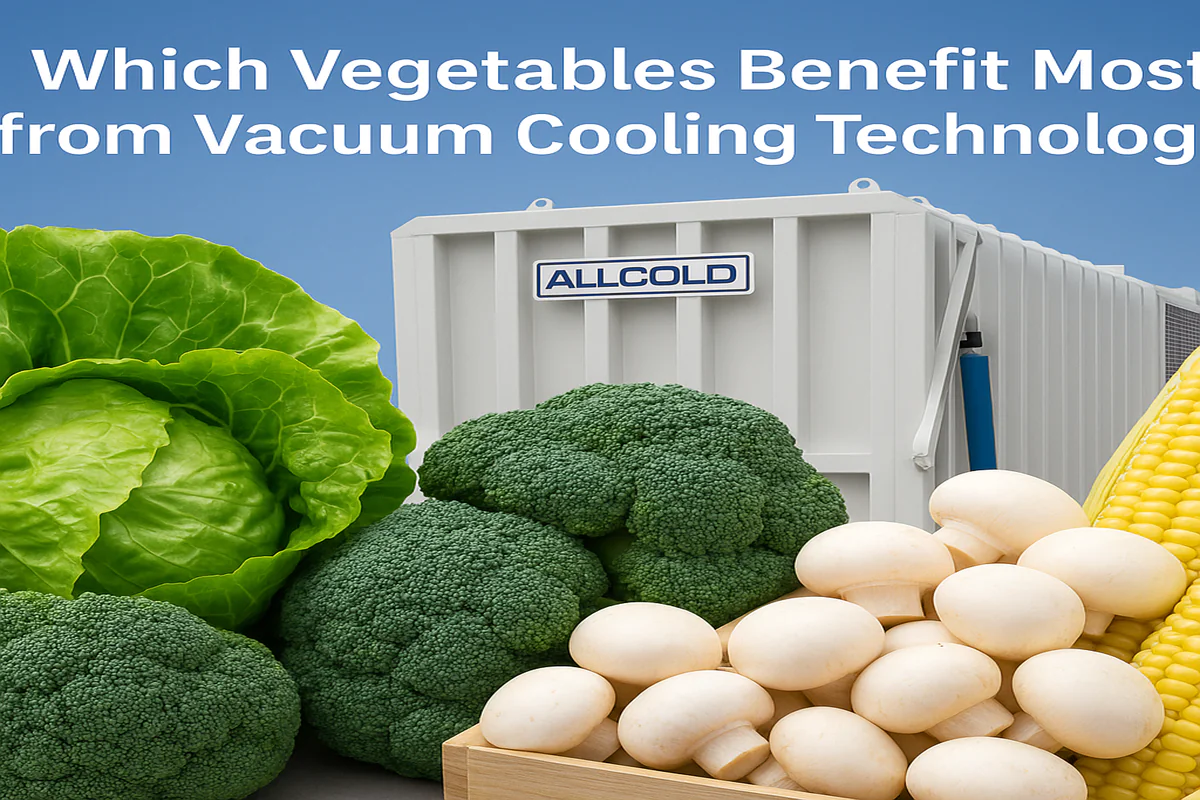
Which Vegetables Benefit Most from Vacuum Cooling Technology?
You see the promise of rapid cooling, extended shelf life, and superior quality, but you’re unsure if this technology is
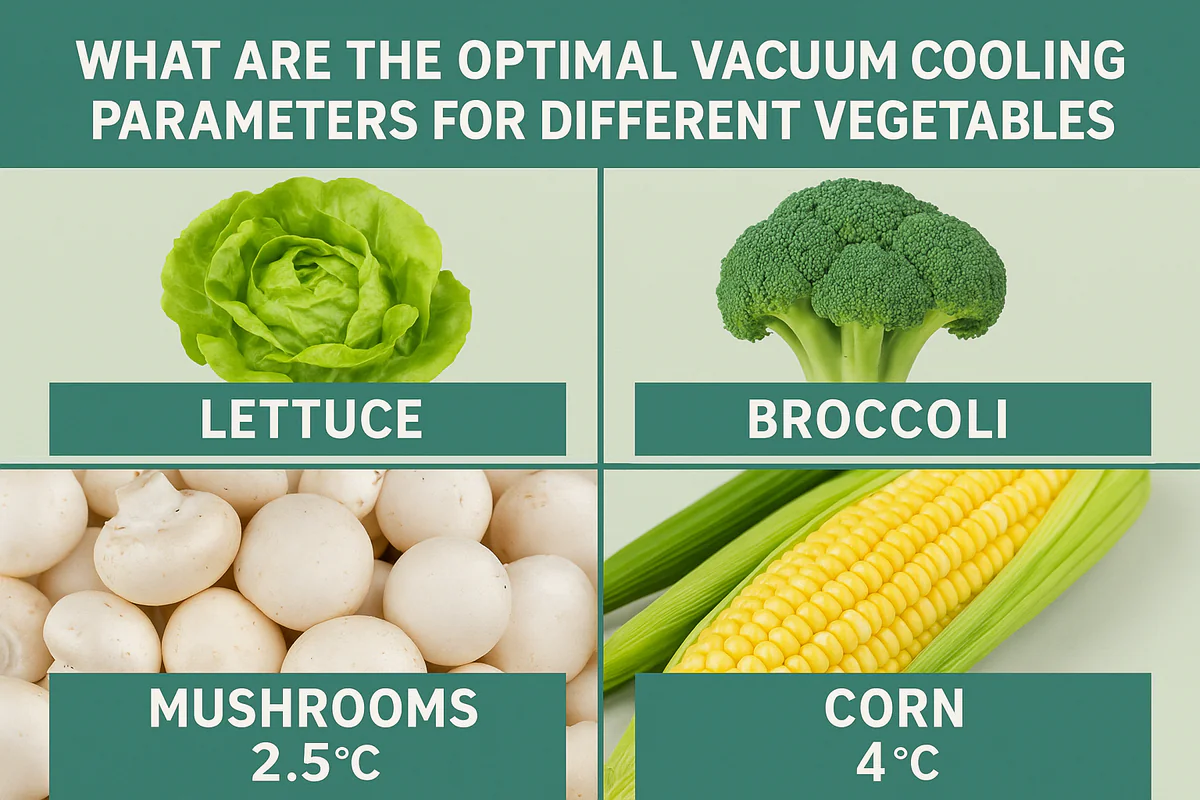
What Are the Optimal Vacuum Cooling Parameters for Different Vegetables?
You’ve harvested beautiful produce, from crisp lettuce to delicate mushrooms. But using a "one-size-fits-all" setting on your vacuum cooler feels
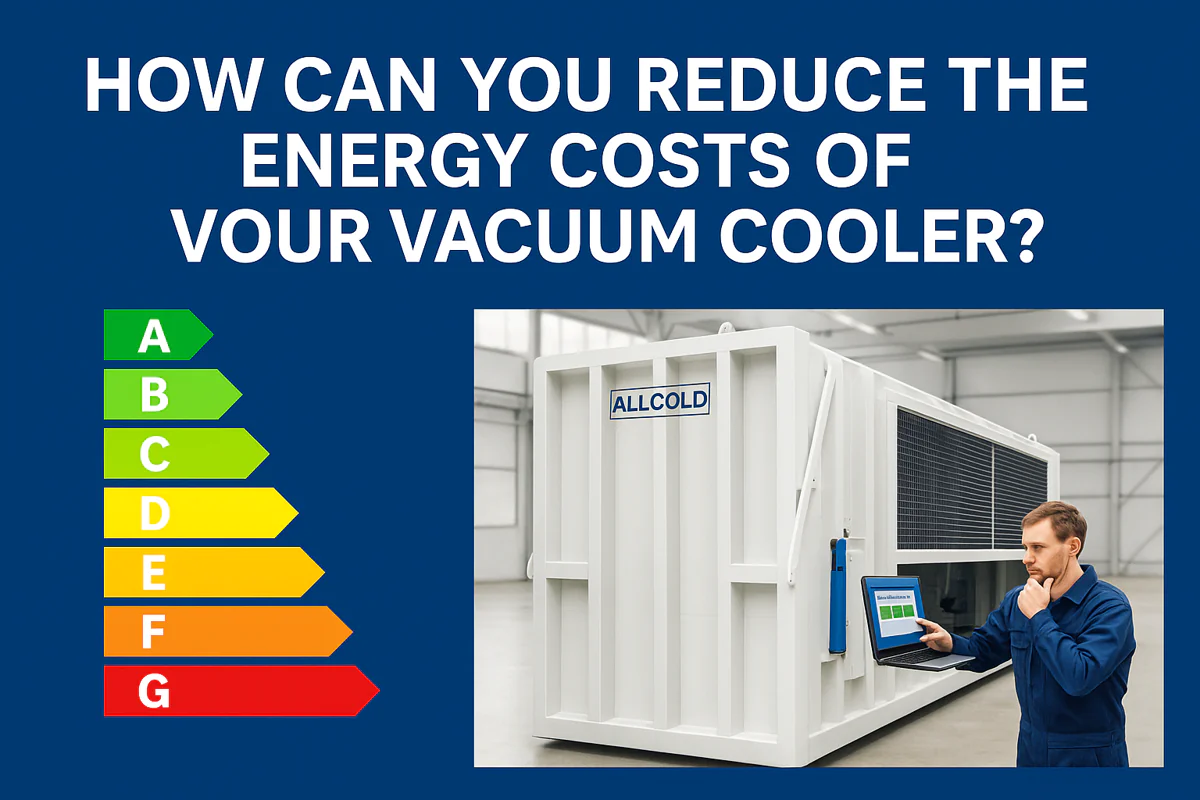
How Can You Reduce the Energy Costs of Your Vacuum Cooler?
Your vacuum cooler is a powerhouse of productivity, but your monthly electricity bill is climbing. You’re starting to wonder if
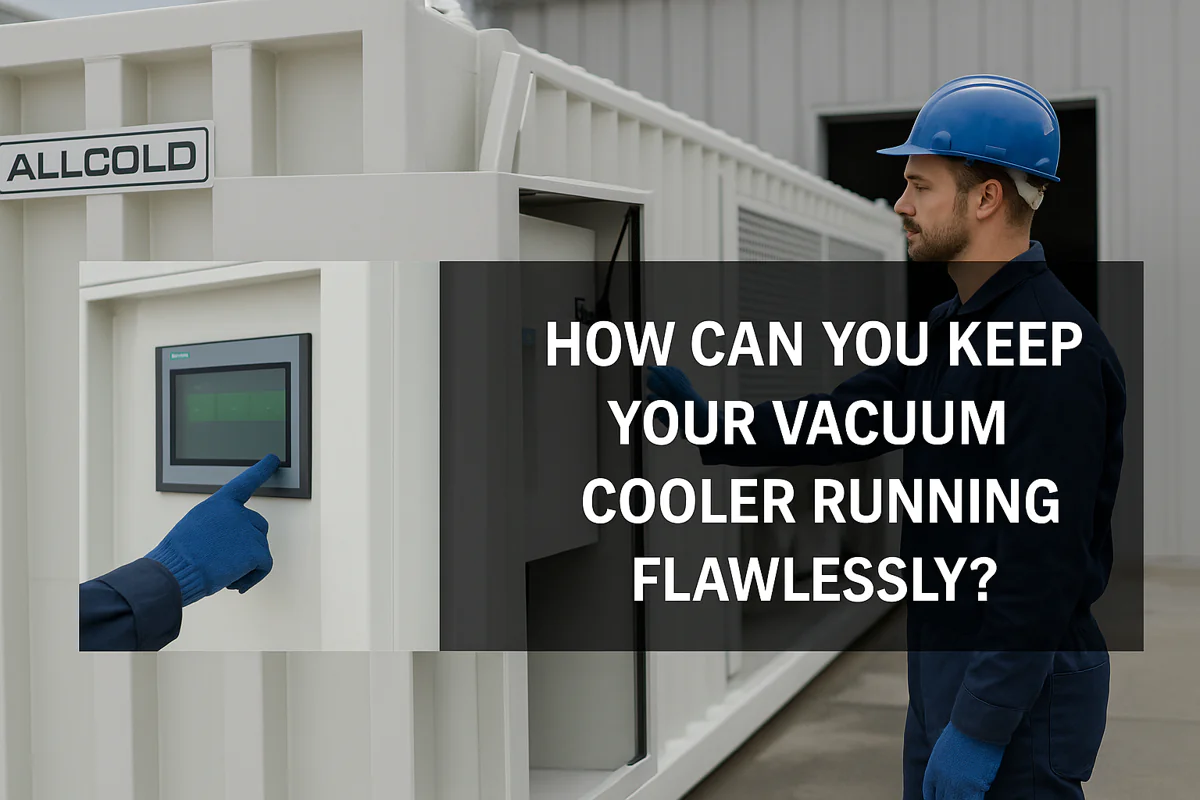
How Can You Keep Your Vacuum Cooler Running Flawlessly?
Your vacuum cooler is a vital asset, but you’re worried about unexpected breakdowns during peak season. Neglecting maintenance feels like
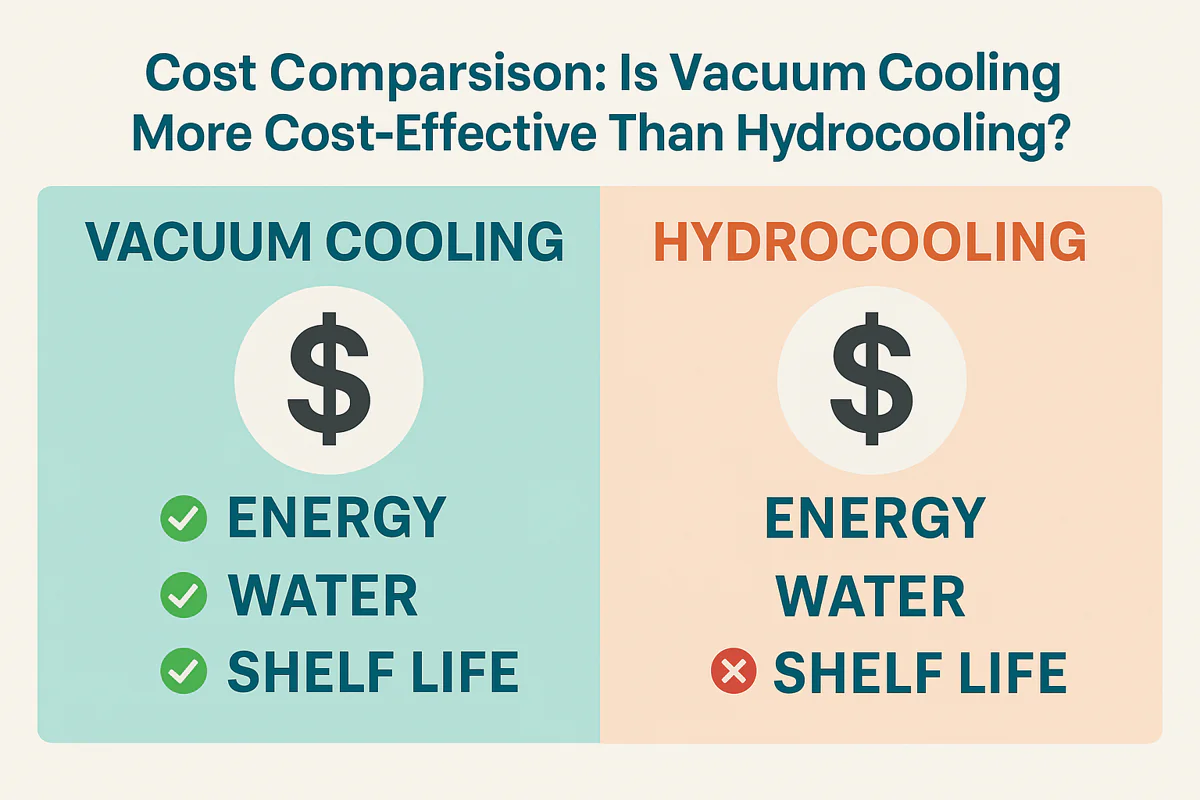
Cost Comparison: Is Vacuum Cooling More Cost-Effective Than Hydrocooling?
Choosing between cooling technologies feels like a high-stakes gamble. You need to lower your operational costs, but the wrong decision
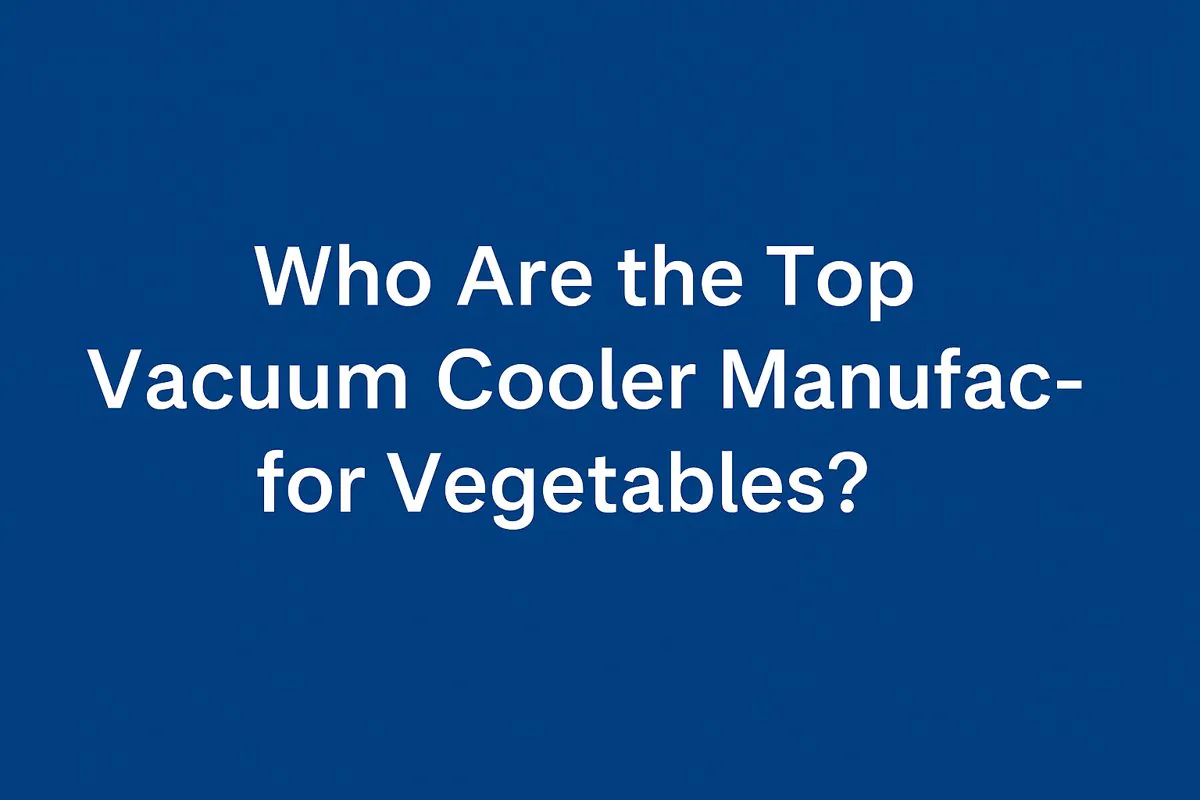
Who Are the Top Vacuum Cooler Manufacturers for Vegetables?
Searching for a list of top vacuum cooler brands can be overwhelming. You’re not just buying a machine; you’re investing
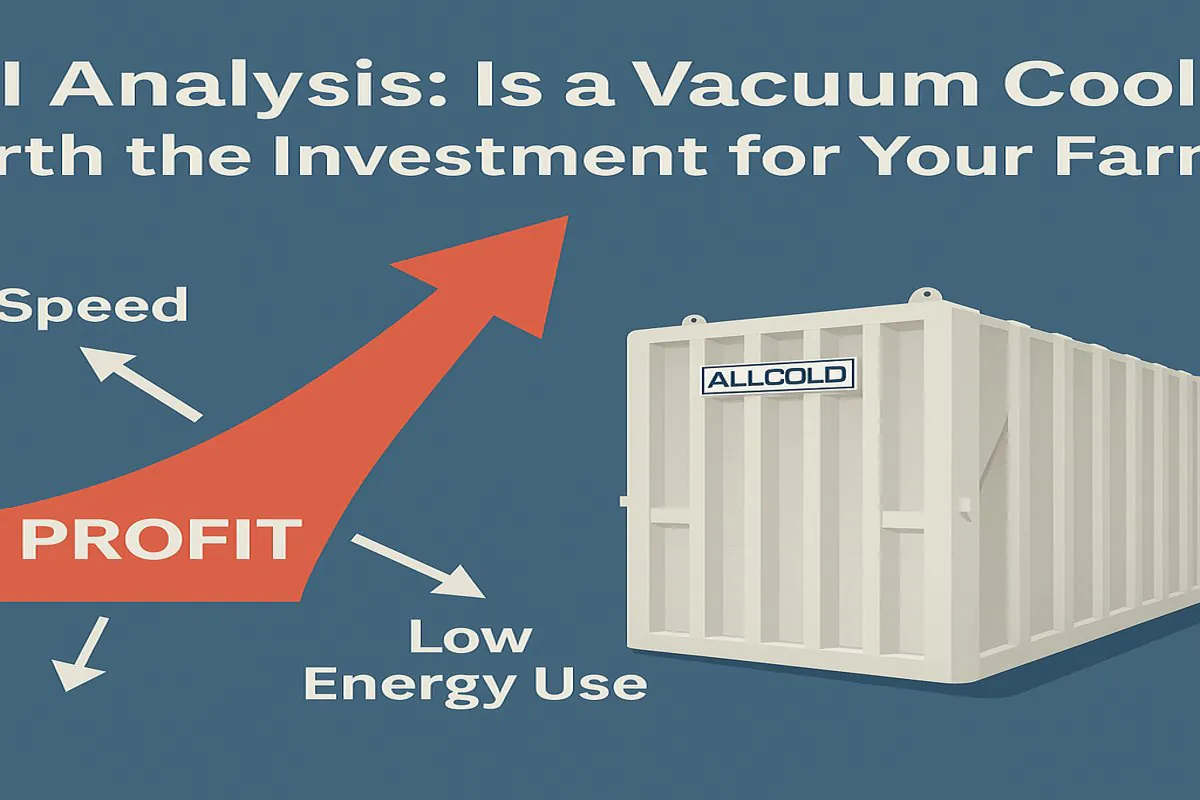
ROI Analysis: Is a Vacuum Cooler Worth the Investment for Your Farm?
You see the high upfront cost of a vacuum cooler and hesitate. But slow cooling methods and post-harvest losses are
